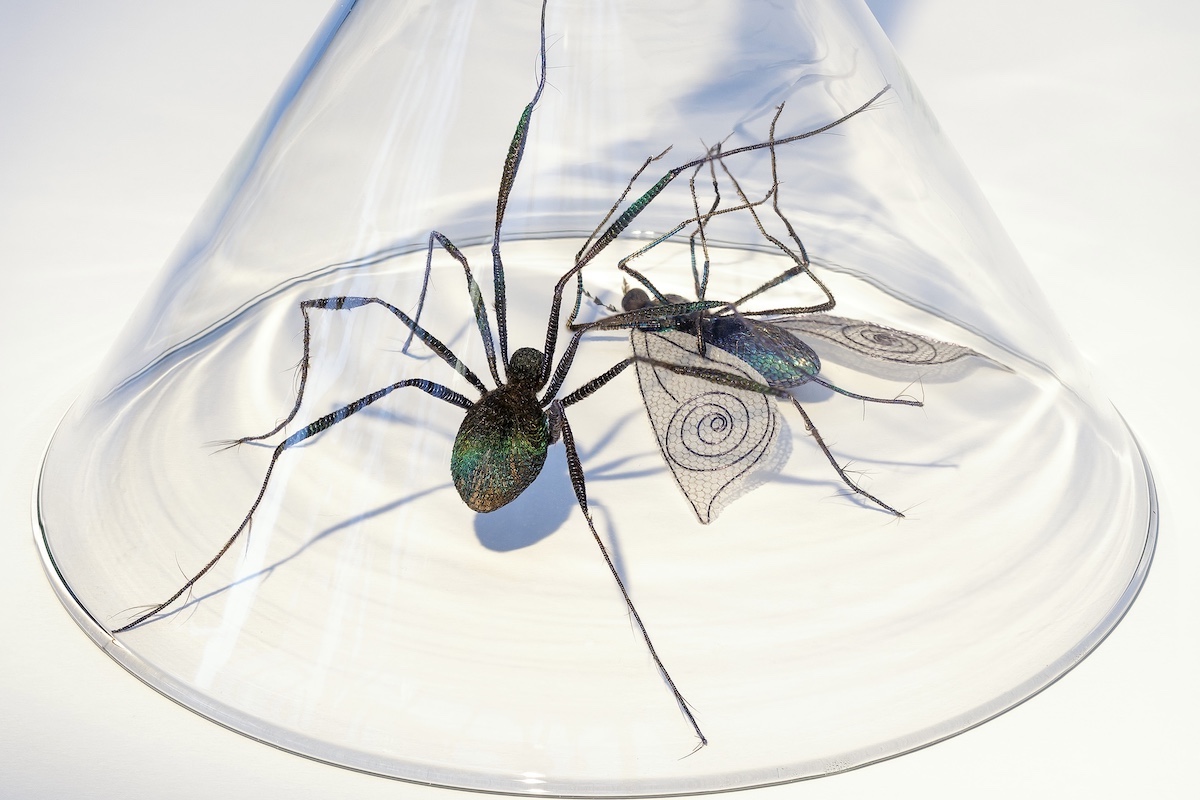There are many kinder words than mistake, like test, or trial, or experiment, but the word mistake suggests something it’s tempting to hide away, when these are often the experiments that can reveal the most.
I have a collection of mistakes spanning the last 20 years from all my attempts at making insects. The ticks’ mandibles were too cosy and more suitable for a teddy bear; the fleas’ legs knee joints just got too complicated. One particularly disappointing mistake was an attempt at making moth antennae. They’re scrolled wire trying represent the way perfume and pheromones swirl in the air. And they definitely didn’t. I’d made something straggly when what was needed was something delicate and ethereal.
What’s missing when something doesn’t work can help to show what’s really needed. It’s a signpost that might say come back later and try again or don’t touch with a bargepole.
I’ve been experimenting with wrapping a textile butterfly in invisible thread and suspending it in the frame as if it’s caught in a cobweb. I can’t do it as expertly as a spider but this might be a cunning way of suggesting a spider, without having to have one there - I love them but they can scare a lot of people away.
But there is something wonderful about tiny scraps of fabric and feather becoming frightening and it has taken many experiments to get to this way of making spider legs.

Spider and Fly incident. Image Tas Kyprianou
Of course, I don’t spend all my time in the experimental creative state, but I recognise what the freedom of experimenting feels like: one idea leads on to the next version, or leaps in a new direction and maybe joins up later, or maybe not. And I’ve started thinking about all my work in this way; the last piece I’ve made, even if it’s big and important, is actually the experiment for the next piece. This way of thinking about making is a more adventurous headspace to be in when I can manage it.
A new ‘taxonomy of making’ is emerging where species jump kingdom. In my world a fly’s bottom is actually related to a strawberry, because I make them in the same way, building a shape, and covering it with red silk or iridescent bluebottle colours. Fireflies relate to cornflowers, lily stamens to fleas’ legs and so on. Experiencing the evolution of ideas as a maker is a good and approachable way to experience the patterns and workings of how things grow and evolve in nature.
Strawberry abdomen
Of course, this jumping of ideas has always been recognized in science; I recently read a fascinating book by Paul Craddock - Spare Parts - about the history of transplant surgery. He describes how early skin grafts that were being performed in the 15th century took inspiration from grafting done on fruit trees. And I’ve listened to Adrian Thomas interviewed on The Life Scientific talking about rethinking the mechanics of flight by studying insects and working on a drone inspired by dragonflies.
Although I’m fascinated by fleas’ legs, I’m not sure I’m going to make some scientific discovery by making them - but the way ideas can leap out of the box and land somewhere totally unexpected is testament to the importance of making mistakes and experimenting in all areas.
Fleas' Legs
To be open to trying things out means being open to the possibility of mistakes. But they can be a good sign: they indicate a thriving environment for experimenting.
The Taxonomy of Making experiments and the creatures they led to are Bridget’s installation created for Insect Odyssey, an exhibition showing creative interpretations of insects by 27 selected artists, at Salisbury Museum until Sunday 25 September. The exhibition is curated by Dr Elisabeth Darby and Prudence Maltby, with entomologist, Dr Michael Darby. For more information please see the website.